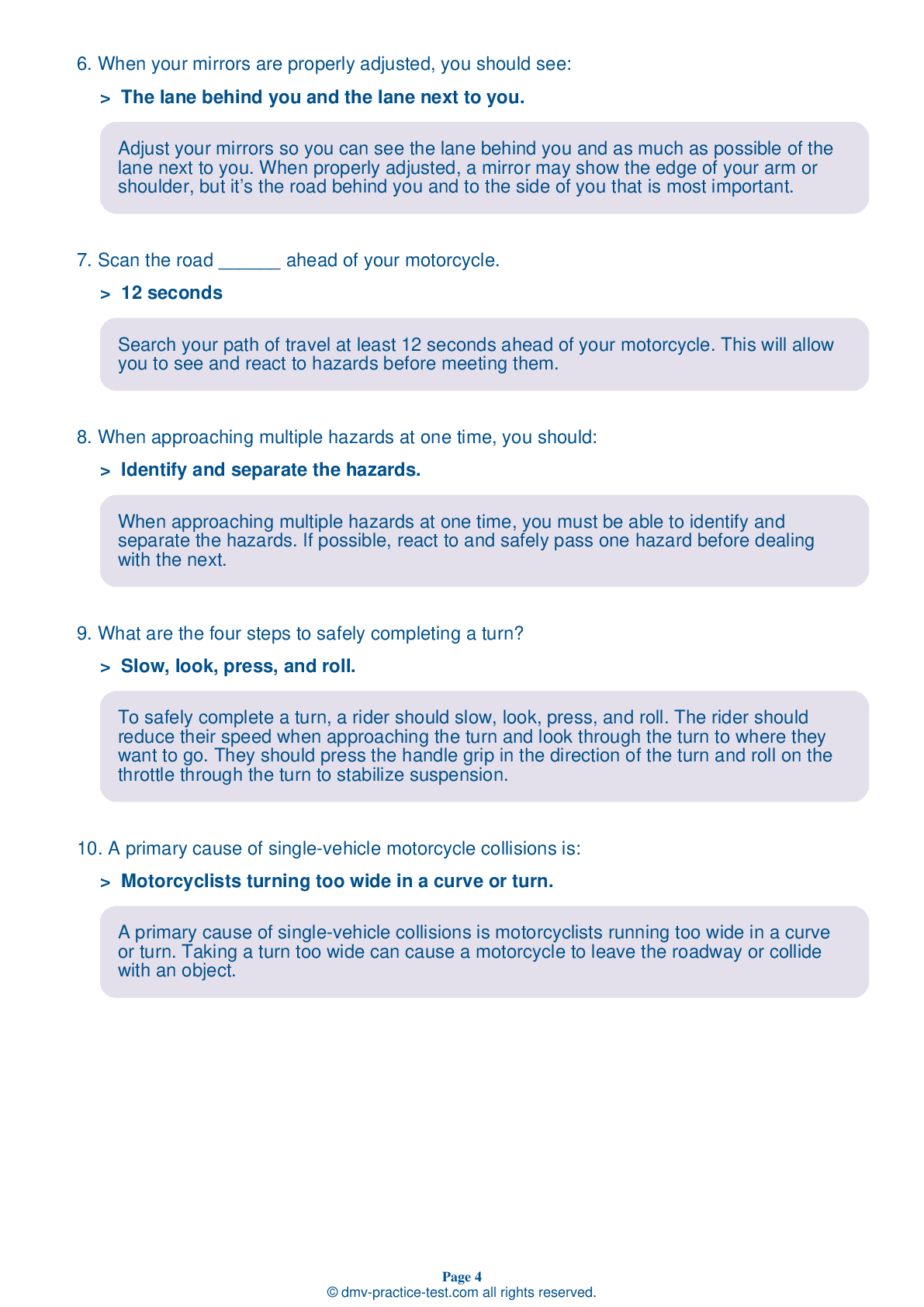Motorcycle Test | License MD 2025 | FREE Online Practice! #16 Page 3 of 4
Take this FREE motorcycle test (license in MD 2025) to check your knowledge of the road rules. To improve your results, download a motorcycle handbook online, study theory, and practice for free on our website. Still worried about how to get a motorcycle license in Maryland in 2025? Check our website for more sample tests, train as much as possible, and boost your grades!
13 . If you see this sign, you:

Regulatory signs are white, rectangular signs with black markings. Drivers must obey the instructions posted on all regulatory signs. Where this sign is posted, it is prohibited for drivers to pass one another.
14 . Snow and ice melt:
Snow and ice melt faster in some places than in others. Places that are likely to remain frozen for the longest periods of time include low areas, shaded areas, bridges, and overpasses.
15 . Passing and being passed when riding a motorcycle is not much different than when driving a car. However:
While the basic techniques for safely passing and being passed are the same as when driving a car, visibility is more critical when riding a motorcycle. The smaller size of a motorcycle makes it easier for you to disappear into another vehicle's blind spot, or for the driver to fail to notice you even if they are able to see you.
16 . To be effective, eye or face shield protection must be all of the following, except:
To be effective, an eye or face shield must be free of scratches; be resistant to penetration; allow clear views to both sides; fasten securely; permit air to pass through to prevent fogging; and allow room for eyeglasses or sunglasses, if needed.
17 . Scan the road ______ ahead of your motorcycle.
Search your path of travel at least 12 seconds ahead of your motorcycle. This will allow you to see and react to hazards before meeting them.
18 . An octagonal sign is always a:
Octagonal signs are always stop signs. Come to a complete stop when approaching a red, eight-sided sign.
See the exact questions that will be on the 2025 Maryland DMV exam.
99.2% of people who use the cheat sheet pass the FIRST TIME
Jeneen was tired of paying $5/gallon. She got herself a scooter that required the motorcycle license. She studyed the motorcycle test cheat sheet and passed her test the next day!
Christopher tells us how he knew nothing prior to obtaining the motorcycle study guide, and he only got one question wrong because he clicked on the wrong answer by mistake.



